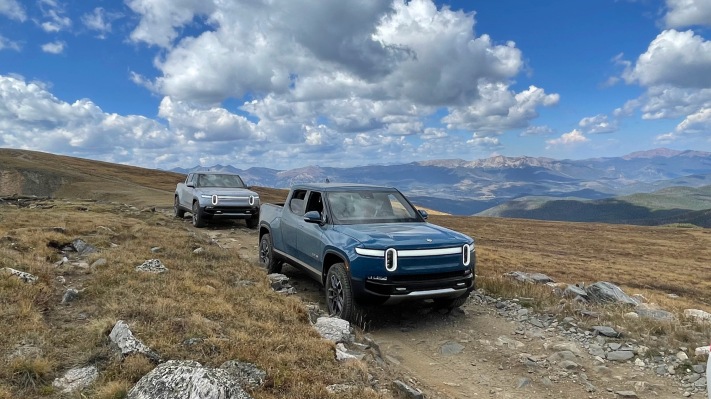The euphoria around Rivian kicked into overdrive Wednesday as it debuted as a publicly traded company, with an opening share price of $106.75.
If that sticks, it would give Rivian an implied valuation of $90 billion. The opening trade was nearly 37% higher than its listed IPO price of $78. That absolute eye-popping number makes Rivian one of the largest IPOs in U.S. history and puts its market cap above GM as well as one of its backers, Ford (GM’s market cap is $86.31 billion; Ford’s is $78.2 billion).
That share price continued to rise after it began trading around 1 pm ET, hitting as high as $119 a share before falling to about $112.
The historic size of the Rivian IPO is not lost on founder and CEO RJ Scaringe. However, and perhaps as expected, he is bullish on the future of EVs, noting in a recent interview that the 90 to 100 million vehicles sold each year will transition to electric in the next 10 to 20 years.
“Ultimately, the way investors look at the space is really valuing what the future looks like,” Scaringe said. “In not too much time, 100% of the business will be electric.”
And while Rivian is very early in terms of its vehicles and launch, Scaringe said investors see and are valuing the company based on its future potential as well.
“If they’re evaluating us purely on our P&L (profit/loss) today, I think they’d be missing the point of the company; they’re, of course looking at what they think the company is capable of achieving over time,” he said.
What Rivian is capable of achieving has yet to be proven; investors, customers and industry observers will learn that soon enough. However, its future plans are certainly ambitious and extend far beyond the first two consumer vehicles — the R1T pickup truck and the R1S SUV — and its partnership with Amazon to produce 100,000 electric commercial delivery vans by 2024. Patent documents as well as Scaringe’s own comments to TechCrunch show that Rivian plans to launch a range of consumer and commercial products.
Investors may also be betting that Rivian’s push to become vertically integrated — in the long term it even plans to develop its own battery cell — will make the company a technology leader.
“It’s really critical to control and vertically integrate what we would think of as the core technology stack — so all the electronics in the vehicle, the full software stack, the propulsion layer in the vehicle,” Scaringe said. “I would say among all those things, the most important is actually software and electronics.”
Wild IPO ride
It’s been a wild ride since Rivian made its IPO filing public last month (it filed confidentially for the IPO in August). That filing — a detailed snapshot of Rivian’s financial standing, risks and opportunities — shows a company burning through cash as it takes on the capital-intensive task of designing, developing, producing and then selling electric vehicles.
The company planned to offer 135 million shares at a price between $57 and $62. Underwriters also had an option to buy up to 20.25 million additional shares.
To say that investor demand has been frenetic is perhaps the understatement of 2021. Rivian not only upped its targeted share price twice, finally listing its initial public offering at $78 a share, it also added more and offered 153 million shares of common stock, according to a regulatory filing was posted late Tuesday evening. Rivian also gave underwriters an option to buy another 22.95 million shares, a higher number than previously expected.
The size of the IPO also benefits some of its biggest backers. Amazon holds a 20% stake and Ford has a 12% stake in Rivian.
The run up in Rivian’s stock is notable for a number of reasons. For instance, it is now valued more than established automakers that produce and sell millions of vehicles every year.
In contrast, the revenues are light and the expenses are high over at Rivian.
The company has hired thousands of employees over several facilities, including its factory in Normal, Illinois. The company now employs more than 9,000 people, Scaringe told TechCrunch in an interview Tuesday evening.
Scaringe’s obsession with vertical integration has also pushed up R&D costs. (The company spent $766 million on R&D in 2020. In the first half of 2021, the company spent $683 million on R&D.)
As a result, net losses have expanded as it prepared for production of the R1T pickup truck and R1S SUV. The company posted a net loss of $994 million in the first half of 2021 alone, far more than double its $377 million net loss the company posted in the same period of 2020.
Meanwhile, revenues are trickling in as deliveries of its R1T to customers, which began last month, begin to ramp up.
Credit: Source link


Comments are closed.